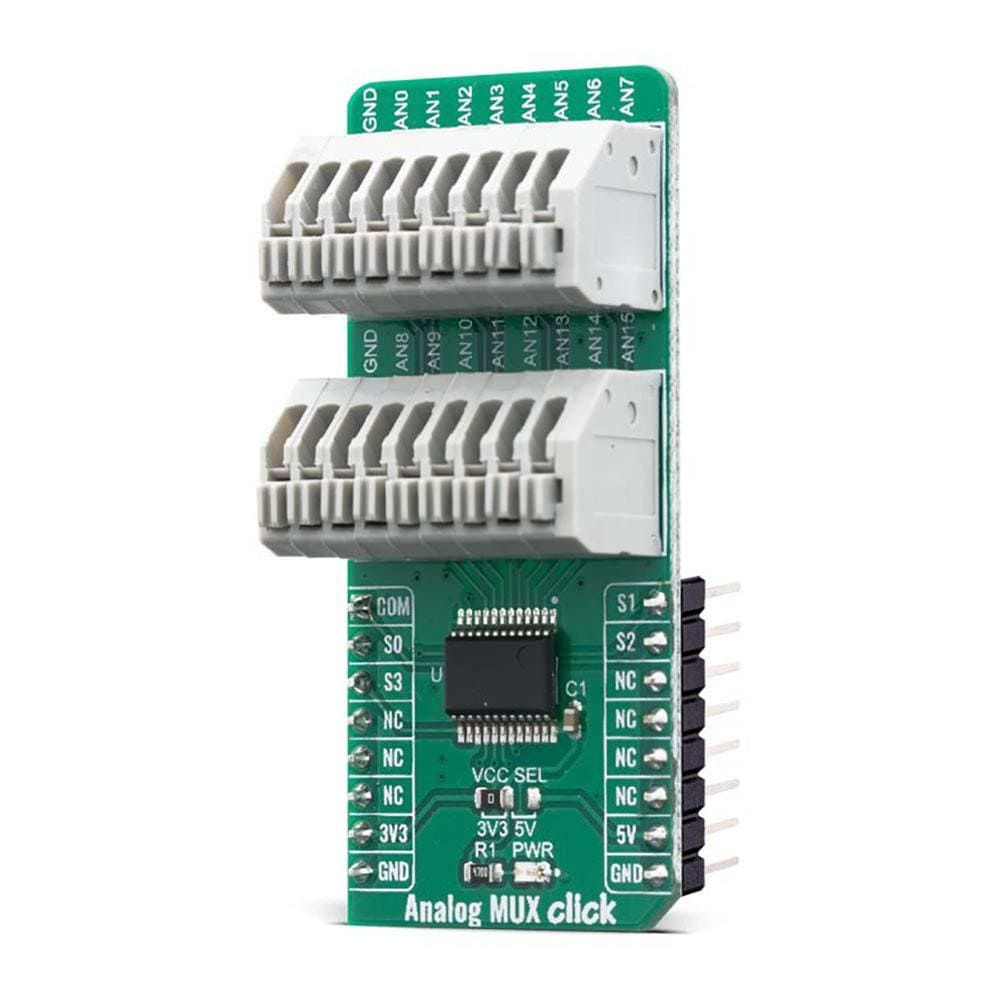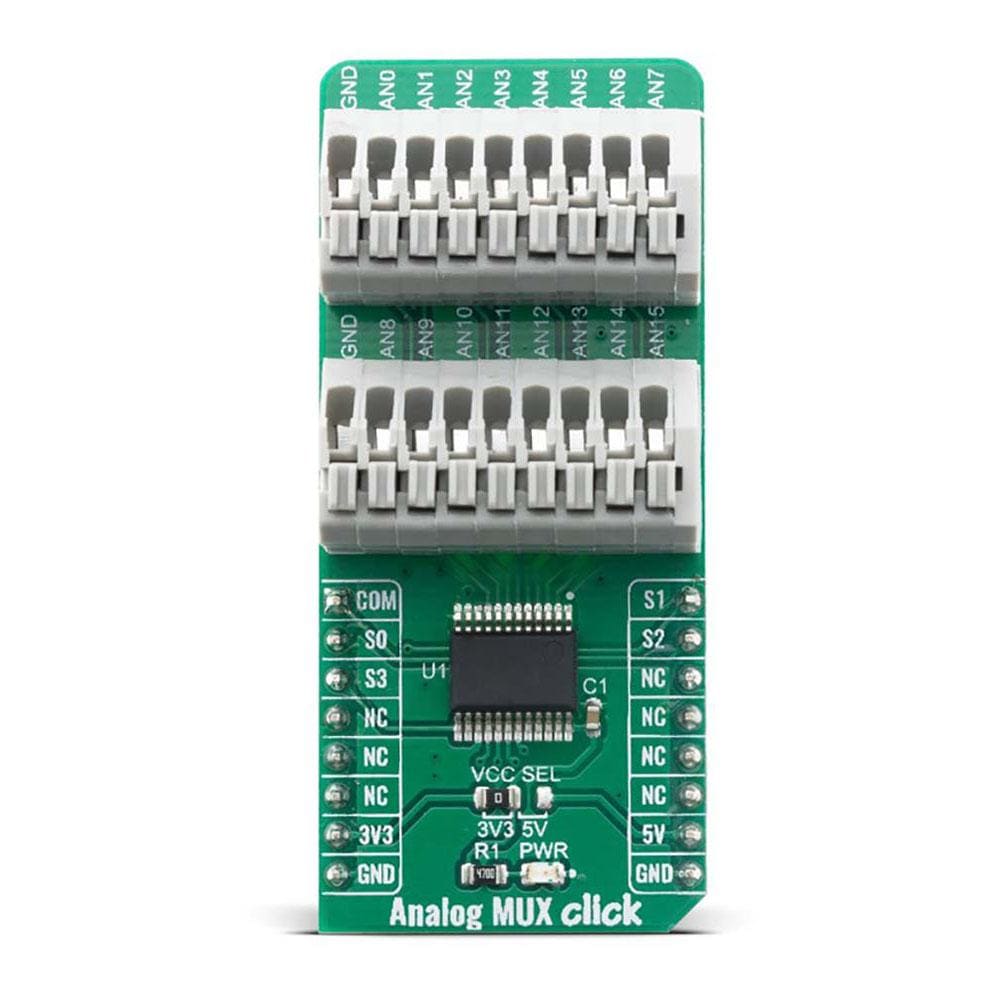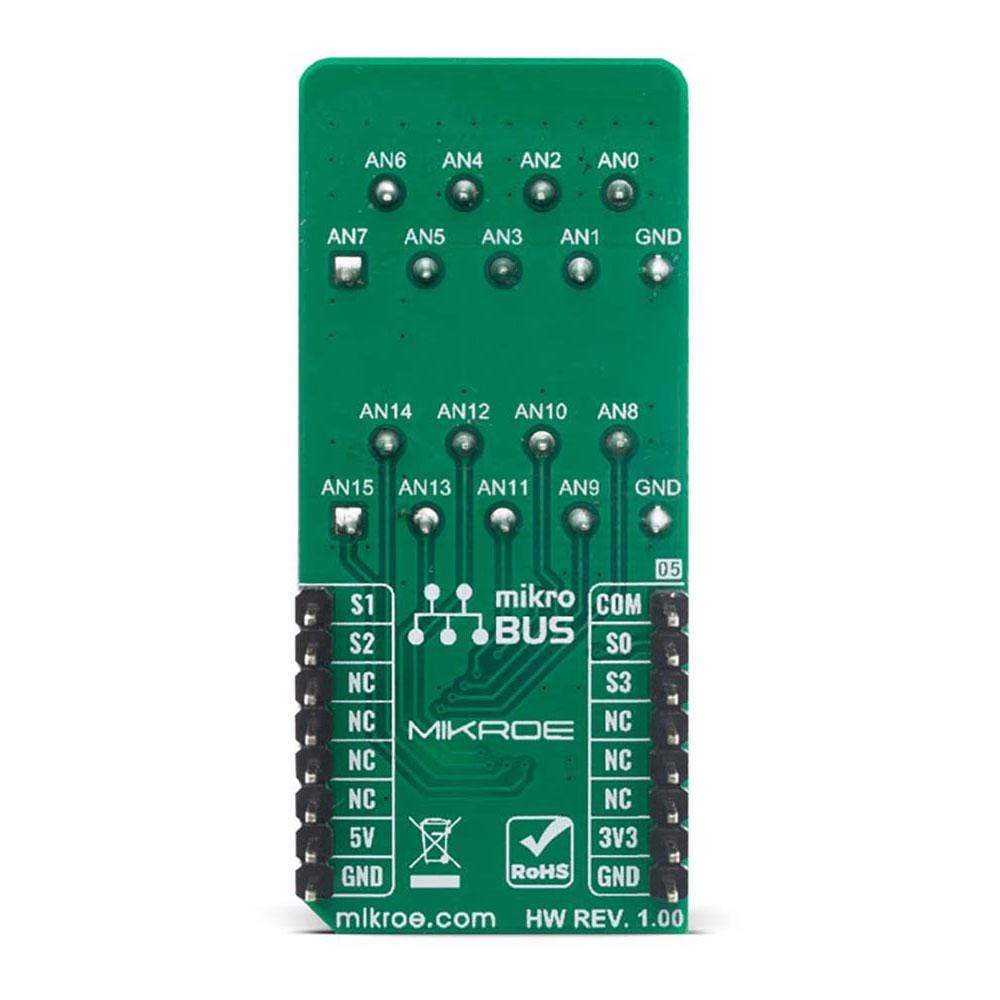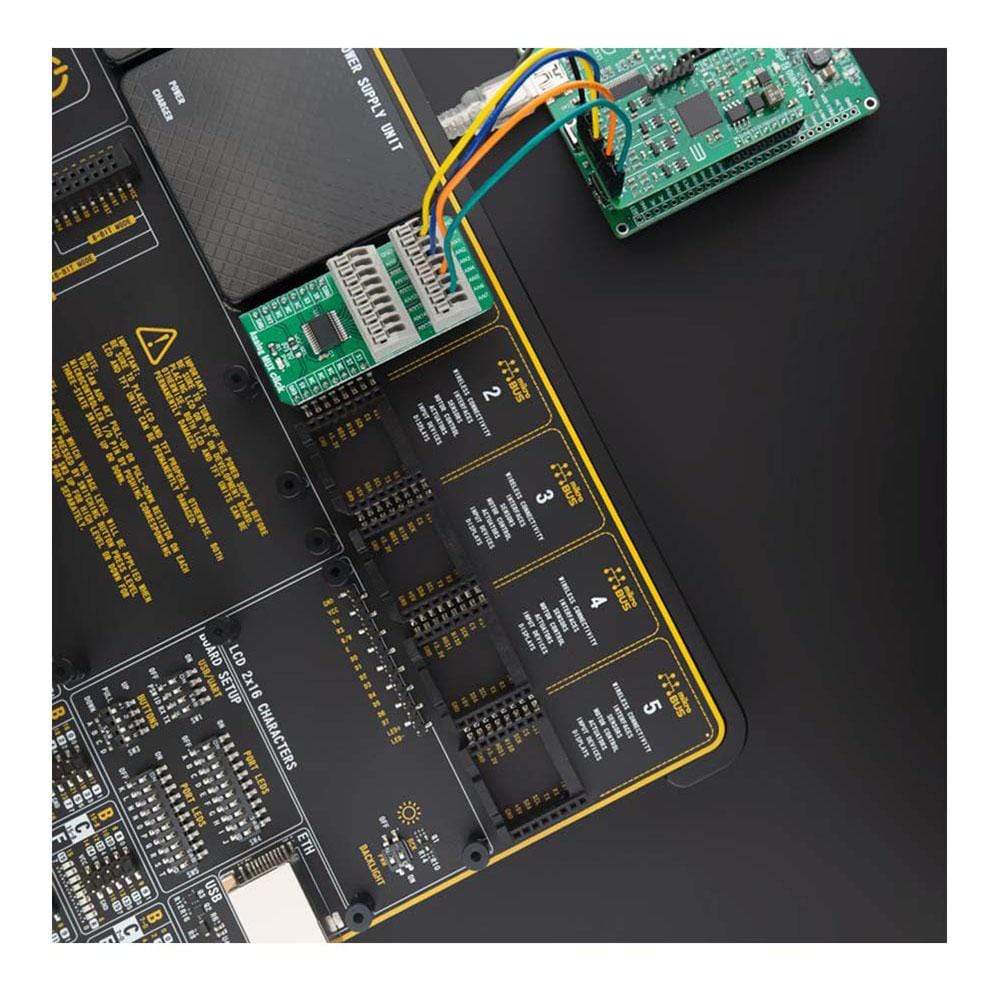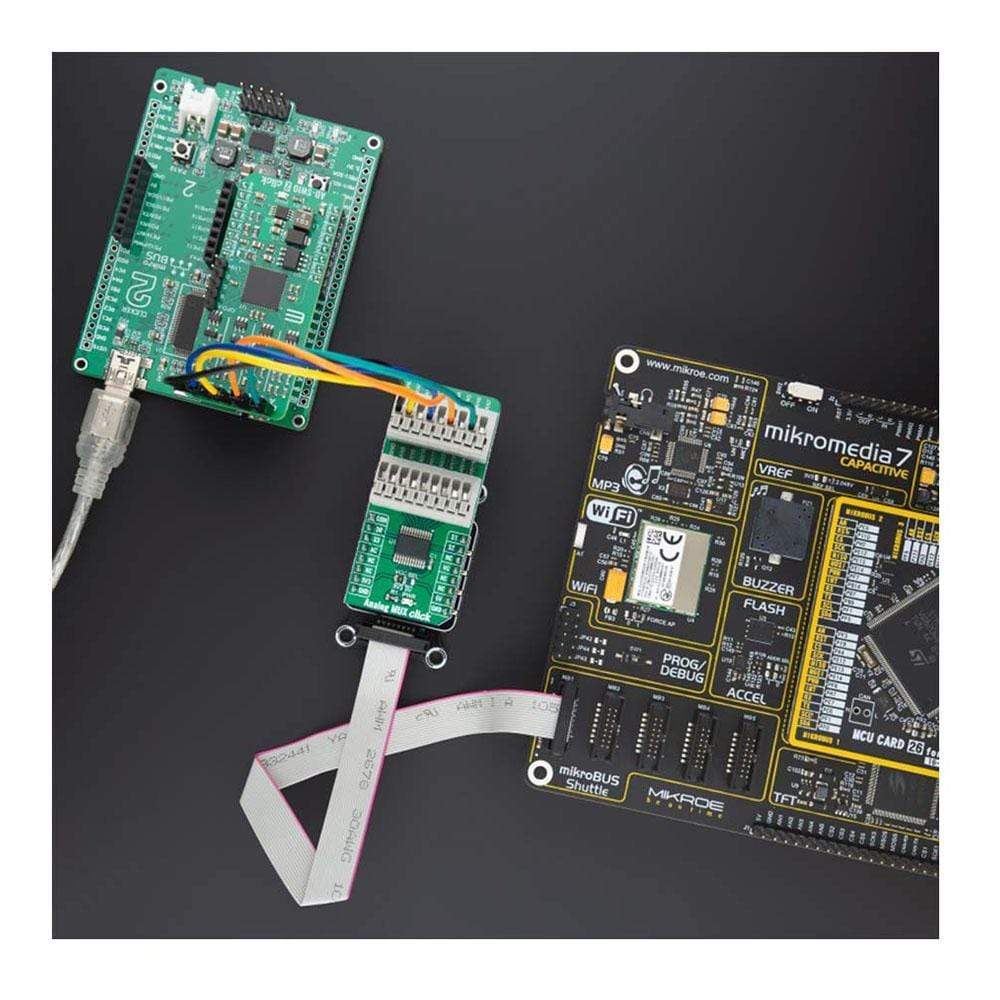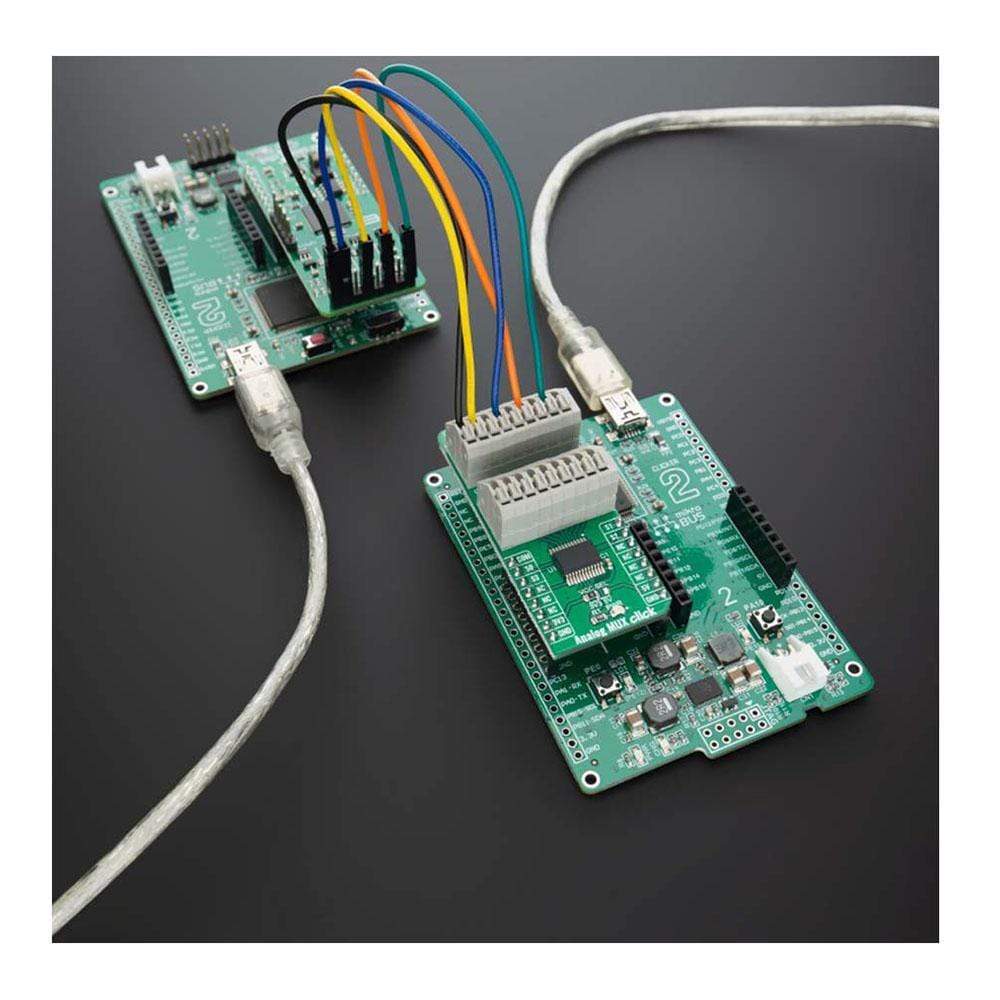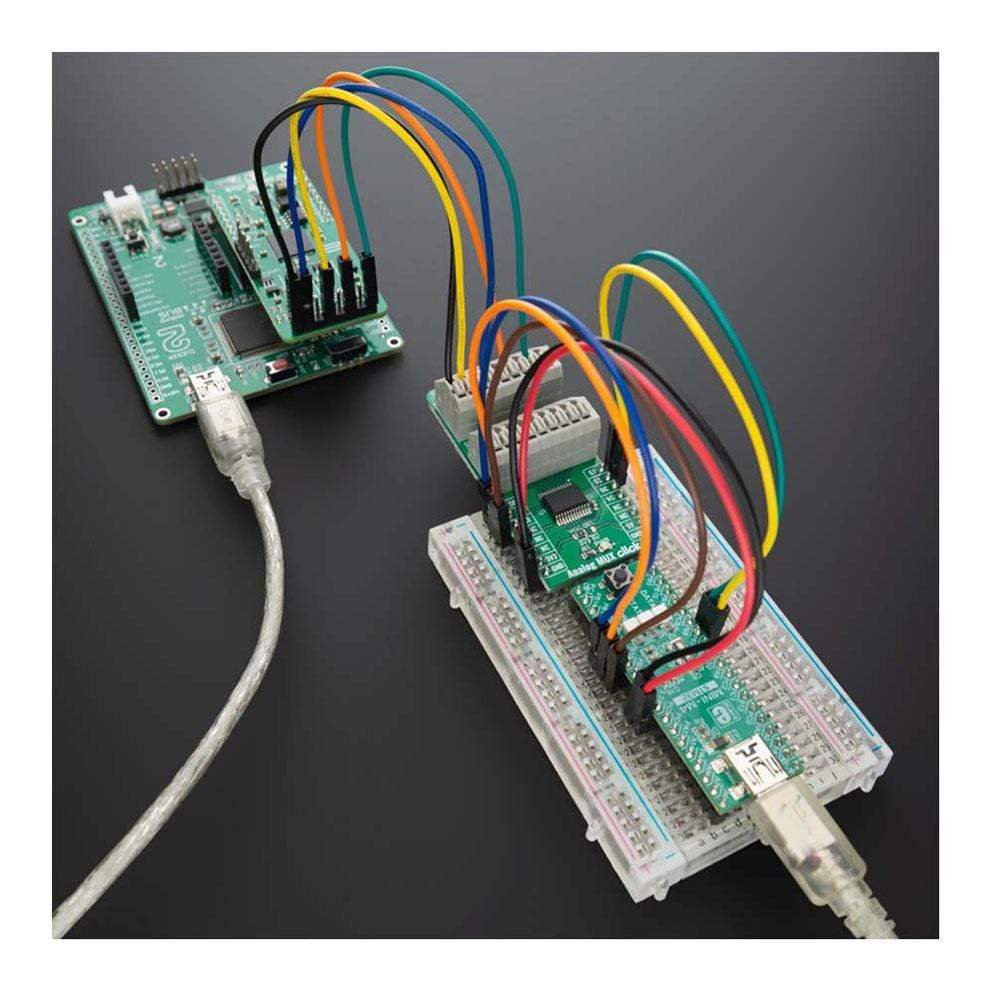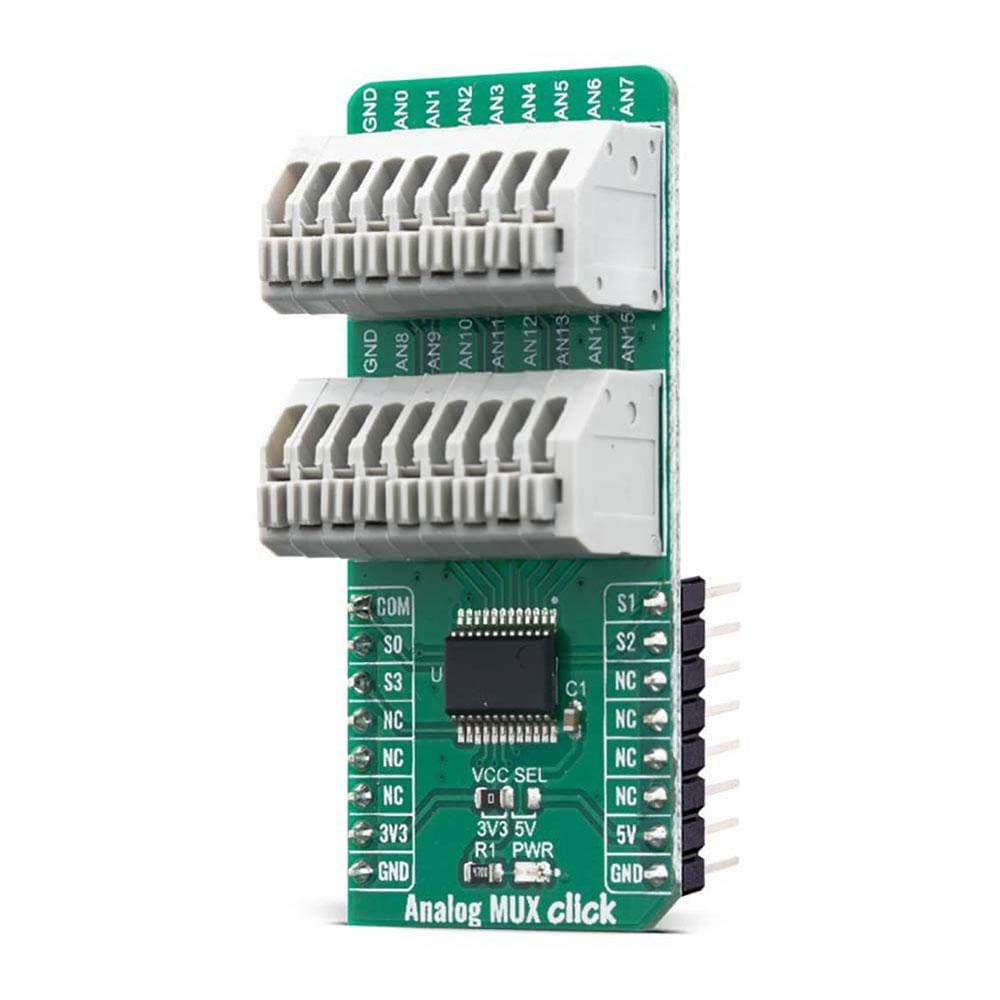
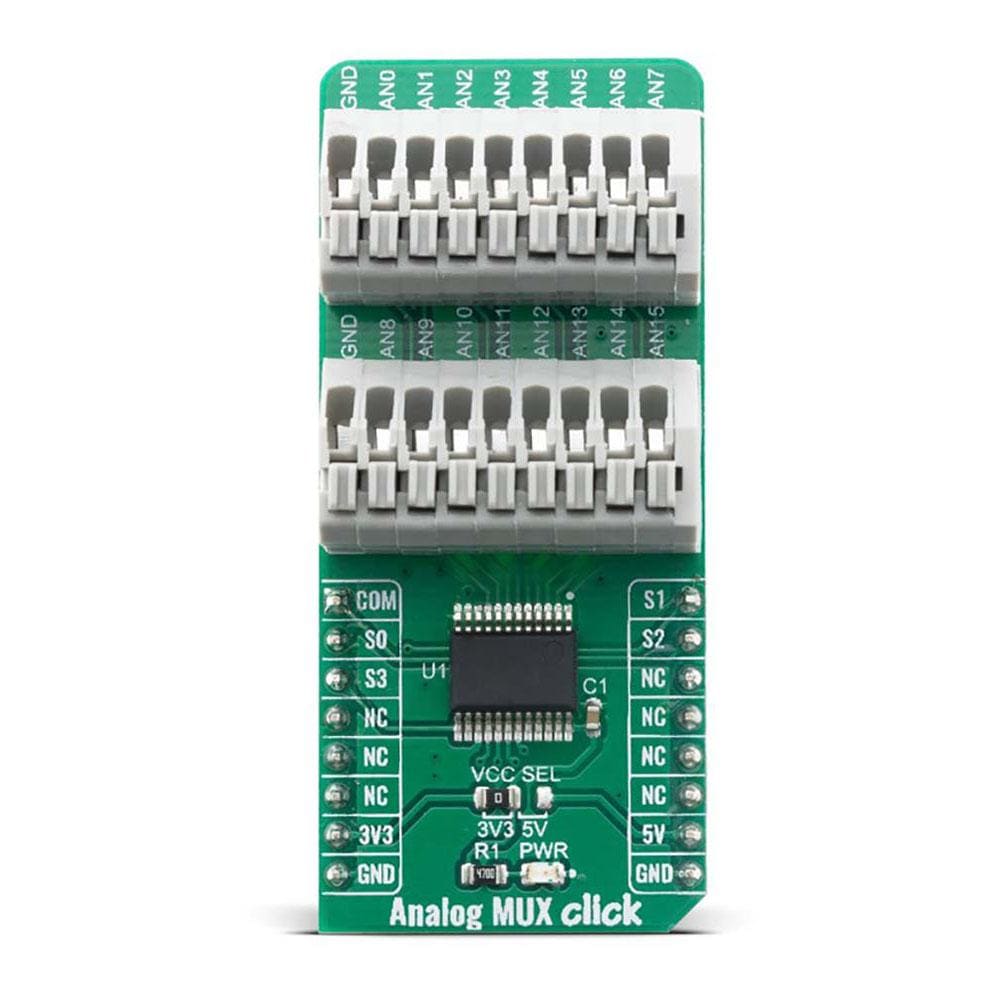
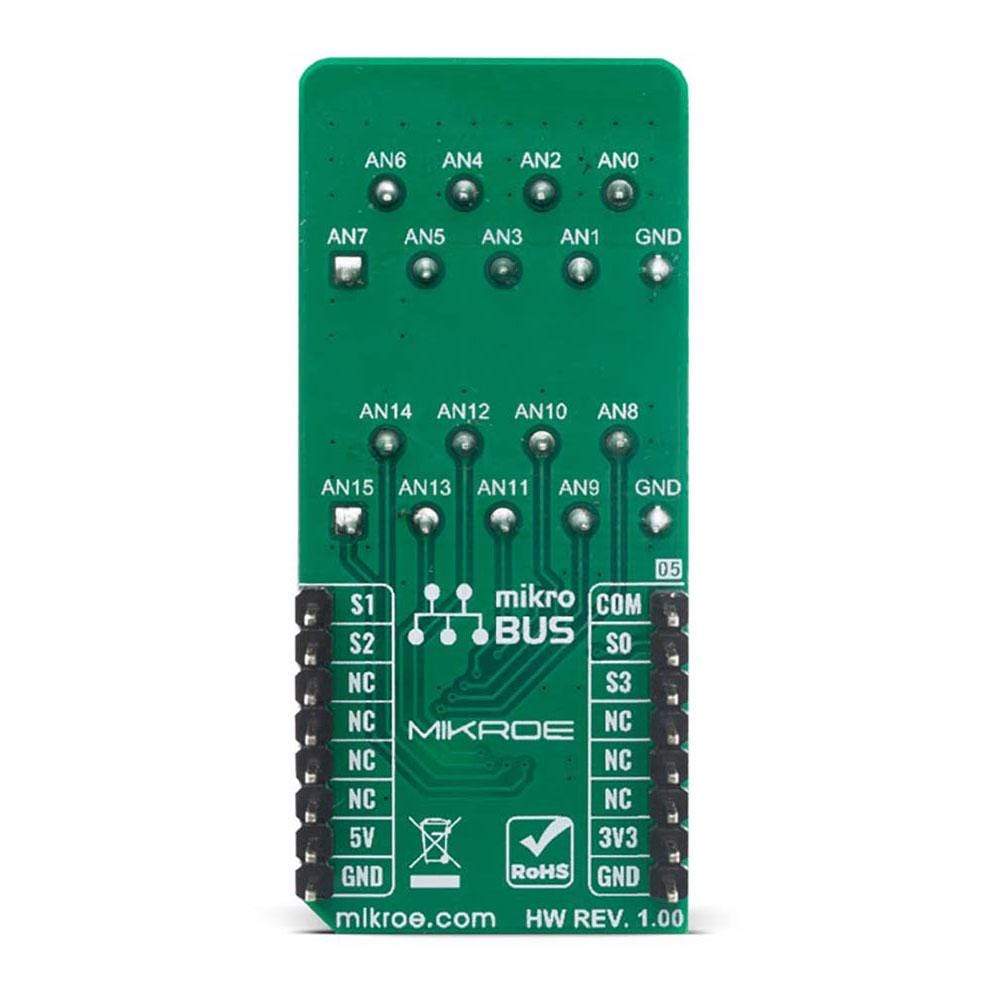
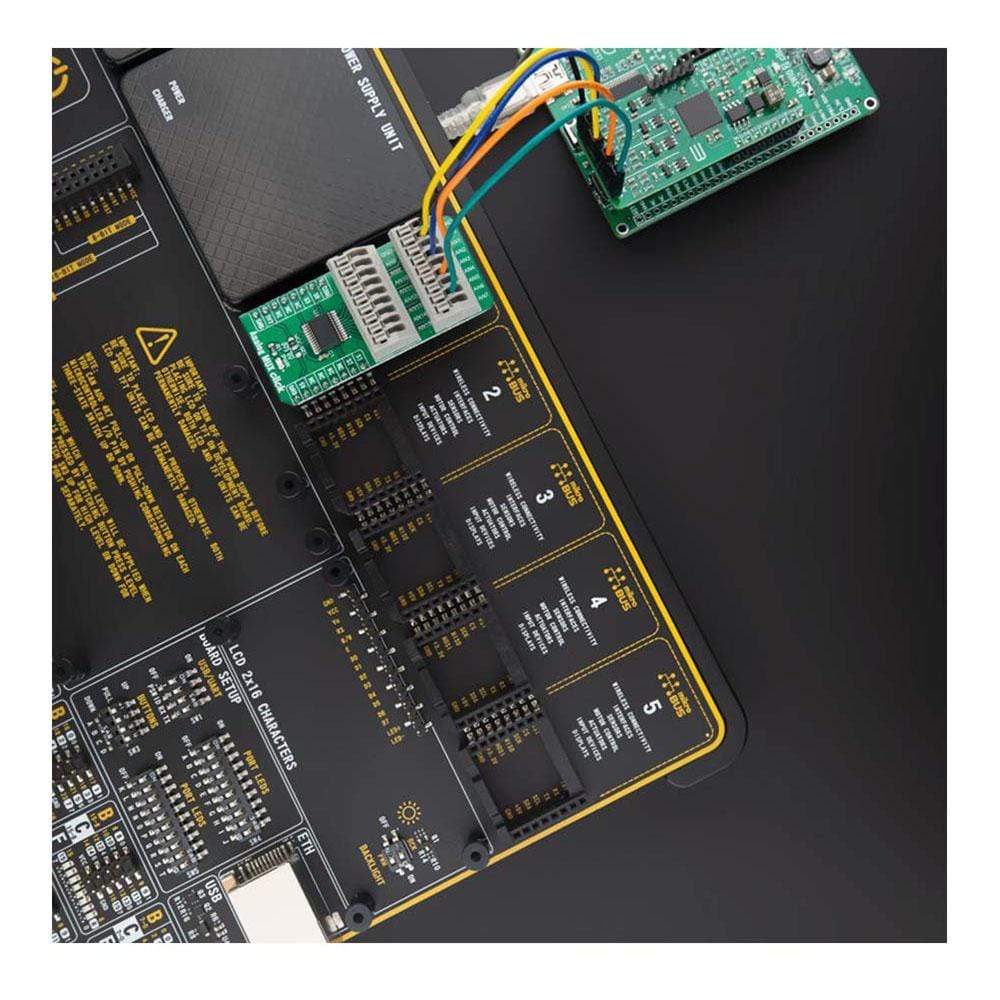
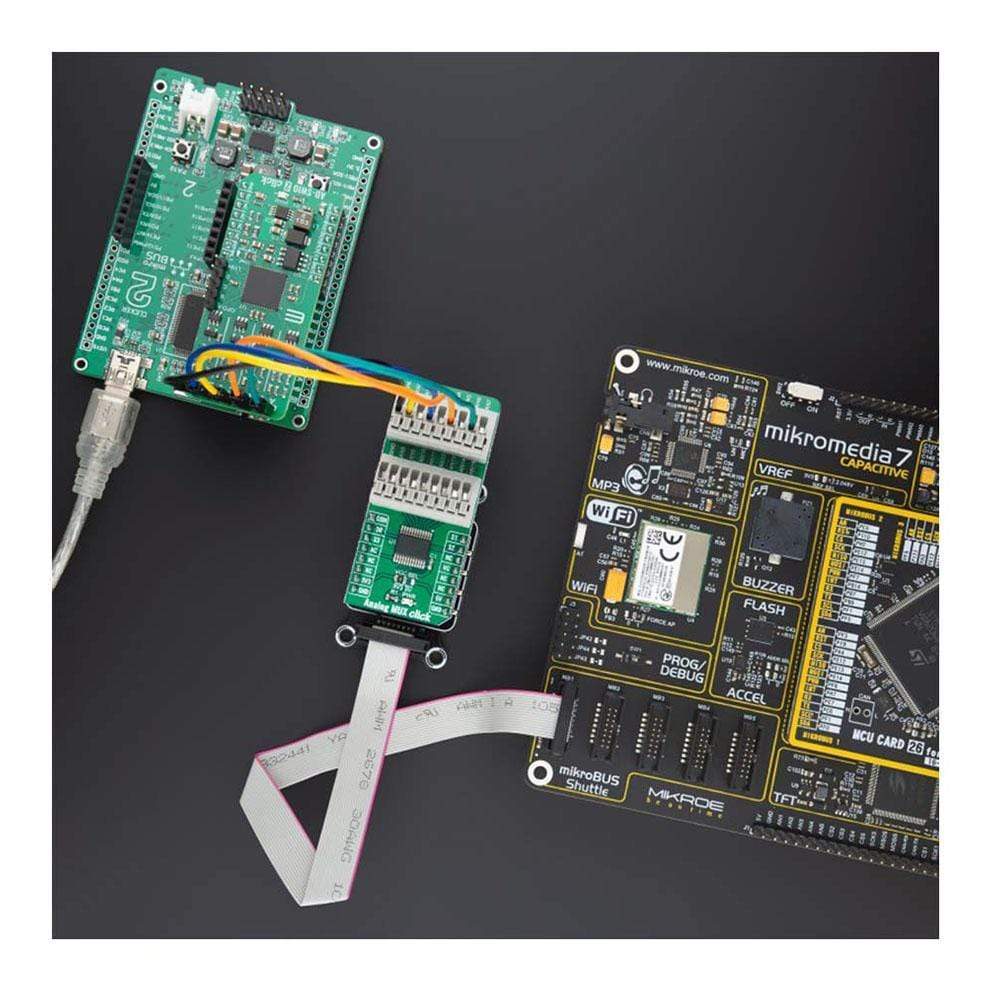
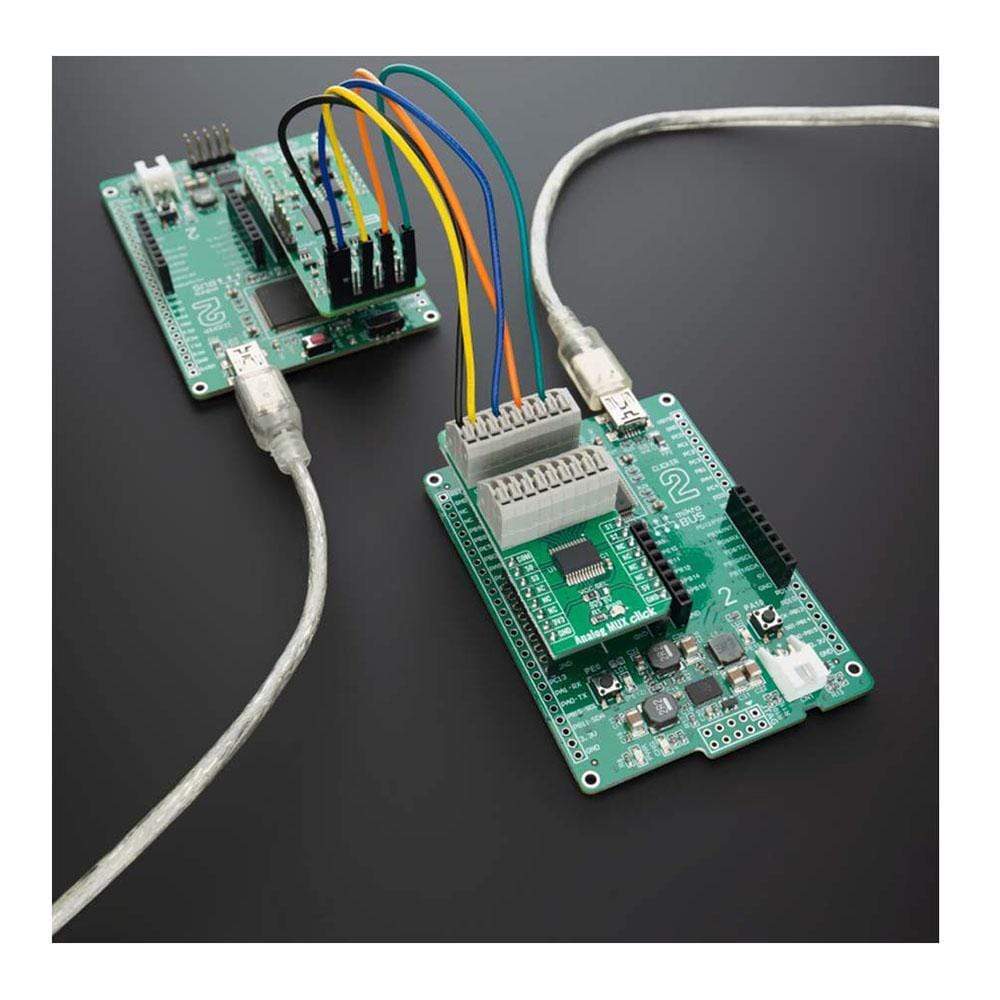
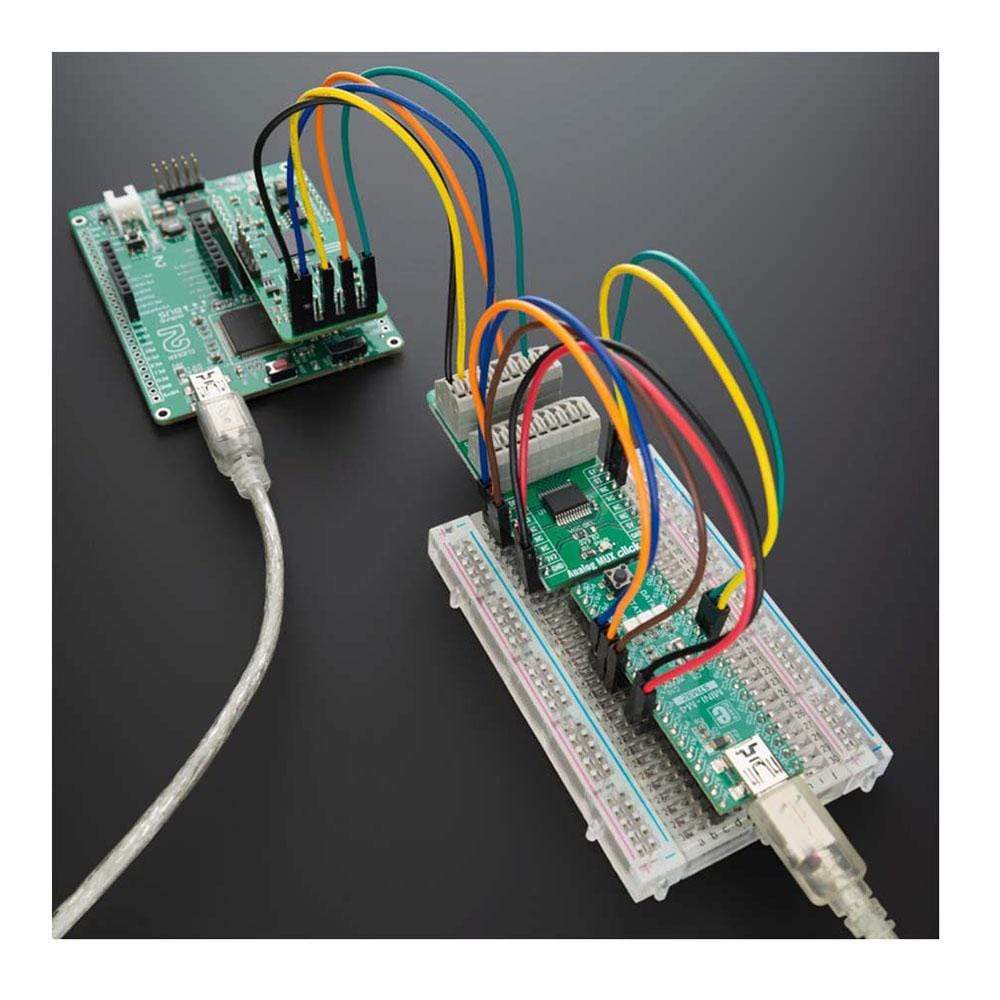
Key Features
Overview
The Analog MUX Click Board™ switches one of the sixteen inputs to one output. It employs the CD74HC4067, a High-Speed CMOS Logic 16-Channel Analog Multiplexer/Demultiplexer, produced by Texas Instruments. It offers rail-to-rail operation, allowing the input signal to swing up (and down) to the voltage of the power supply, with no distortion.
Features such as the low on-resistance and low input current leakage, fast and balanced propagation delay and transition times and break-before-make switching action make this circuit a perfect solution for various switching applications, analogue and digital signals.
Downloads
Das Analog MUX Click Board™ schaltet einen der sechzehn Eingänge auf einen Ausgang. Es verwendet den CD74HC4067, einen High-Speed CMOS Logic 16-Kanal Analog Multiplexer/Demultiplexer von Texas Instruments. Es bietet Rail-to-Rail-Betrieb, sodass das Eingangssignal ohne Verzerrung auf die Spannung der Stromversorgung hoch- (und herunter-)schwingen kann.
Merkmale wie der niedrige Einschaltwiderstand und der niedrige Eingangsstromverlust, die schnellen und ausgeglichenen Ausbreitungsverzögerungs- und Übergangszeiten sowie die Unterbrechungs-vor-Einschaltungs-Schaltfunktion machen diese Schaltung zu einer perfekten Lösung für verschiedene Schaltanwendungen sowie analoge und digitale Signale.
| General Information | |
|---|---|
Part Number (SKU) |
MIKROE-4111
|
Manufacturer |
|
| Physical and Mechanical | |
Weight |
0.02 kg
|
| Other | |
Country of Origin |
|
HS Code Customs Tariff code
|
|
EAN |
8606018717415
|
Warranty |
|
Frequently Asked Questions
Have a Question?
Be the first to ask a question about this.

